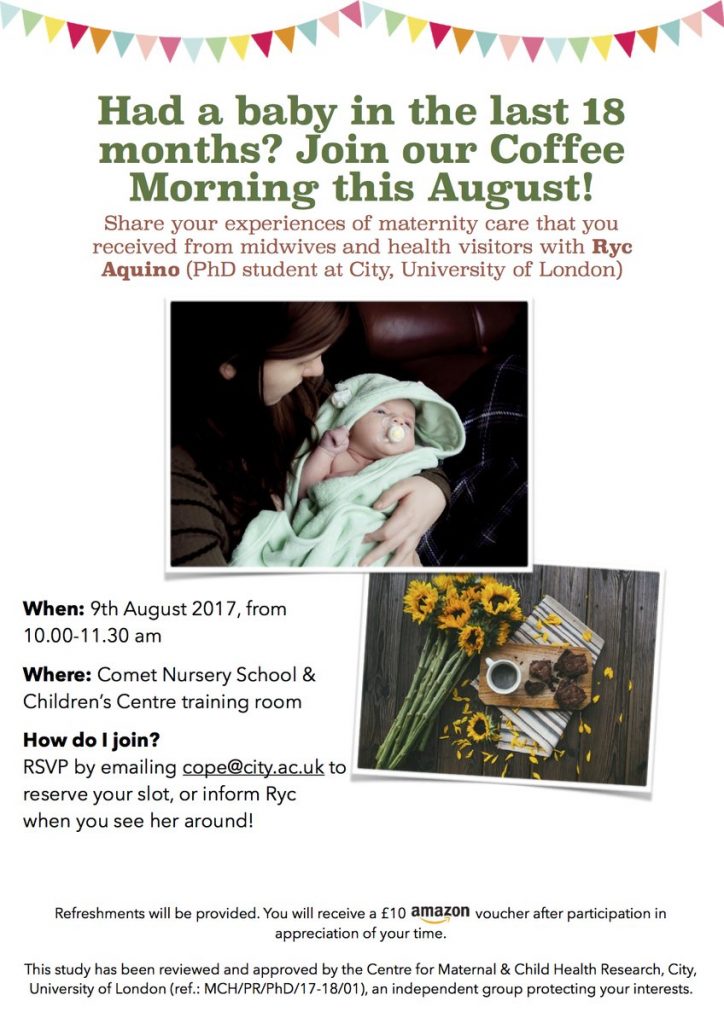Hello and welcome to the July update!
COPE event
On Wednesday 21st of June, 2017, we held an event to present and discuss our research findings to date. In addition to the COPE team (see photo), we had local healthcare professionals and service users attending as well as representatives from the National Childbirth Trust, Royal College of Midwives, Institute of Health Visiting and Community Practitioners and Health Visitors Association. We were very excited to see so many interested individuals attending which lead to great debates on collaboration between healthcare professionals.

[L-R] Ros Bryar, Ryc Aquino, Judy Brook, Suzanne Lee, Rose Coates, Erica Harris, Ellinor Olander, Farzana Khanom, Sultana Uddin
After presenting some of our recent research findings we asked the attendees to identify factors that facilitate collaboration between healthcare professionals during and after pregnancy. Table 1 illustrates some of the factors identified. The factors identified to prevent collaboration between healthcare professionals during and after pregnancy are summarised in table 2. Subsequently, we asked the group to vote for the most important enablers and barriers. As can be seen, the group identified computer systems and organisational structure to be key components in collaboration – they could both facilitate and hinder collaboration. Other factors identified were how face-to-face meetings can help collaboration and how the current system where services is provided by different organisations prevents collaboration.
| Enablers |
Votes |
| Structure that encourages collaboration |
14 |
| Shared computer systems |
14 |
| Face-to-face meetings |
12 |
| Co-design/production of services |
7 |
| Joint strategic leadership |
4 |
| Use evidence from Healthy Child Programme and Better Births |
4 |
| Less duplication of work |
2 |
| Motivation and enthusiasm |
2 |
| Funding |
1 |
| Local working/caseloads (close geographical proximity) |
0 |
| TOTAL |
62 |
Table 1. Factors identified to enable collaboration between healthcare professionals
| Barriers |
Votes |
| Work structures/lack of capacity |
16 |
| IT systems are different between services |
12 |
| Different service providers/fragmented commissioning |
10 |
| Information governance/lack of protocol |
7 |
| Need to meet targets/KPIs |
7 |
| Poor engagement with service users (little feedback from women) |
6 |
| No time |
2 |
| TOTAL |
60 |
Table 2. Factors identified to prevent collaboration between healthcare professionals.
Finally, the attendees were asked to make suggestions for future research projects and we received lots of good comments. These are now being discussed within the COPE team, and we will report on them in a future news item. The event evaluated well by the attendees, stating it was good or excellent in our satisfaction survey.



